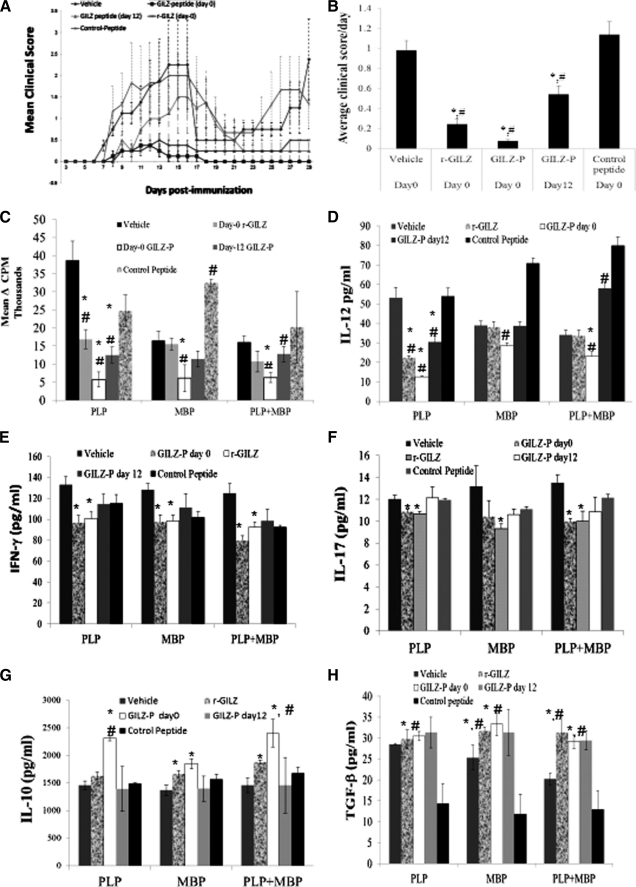FIGURE 4.
GILZ-peptide treatment inhibits R-EAE. SJL/J mice induced with R-EAE were administered intraperitoneally GILZ-peptide (500 μg) either on day 0 or 12 for r-GILZ (2 ng) and control peptide (500 μg) in complex with Pep-1 (0.3 μm) or Pep-1 alone, or vehicle (PBS) on the day of immunization. A shows the mean clinical score per day per group. B, the severity of EAE is depicted as the mean score per day, which is the cumulative score for each animal divided by the number of days that animal was observed. Data represent average ± S.D. from two experiments (n = 9/group). C–H, GILZ-peptide treatment suppresses Th1 cytokines in R-EAE. CD4+ splenocytes isolated 45 days post-immunization from the draining lymph nodes of SJL/J mice induced with R-EAE and treated with GILZ-peptide (500 μg) either on day 0 or 12 for r-GILZ, control peptide, or vehicle (PBS) were restimulated in vitro with PLP139–151 (40 μg/ml), MBP87–99 (40 μg/ml), or both using syngenic irradiated splenocytes as APC for a total of 72 h (including an 18-h pulse with [3H]thymidine). C, proliferative responses of CD4+ splenocytes are plotted as Δcpm ± S.E. #, p < 0.05 as compared with the responses of cells from vehicle-treated mice. Supernatant collected at 48 h from separate CD4+ splenocyte cultures were assessed for (D) IL-12, (E) IFN-γ, (F) IL-17, (G) IL-10, and (H) TGF-β by ELISA. * and # represent p < 0.05 as compared with vehicle or control peptide-treated groups, respectively.

